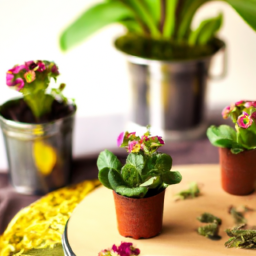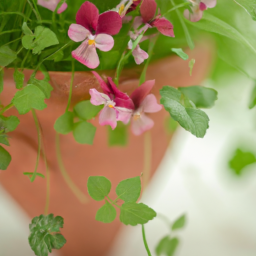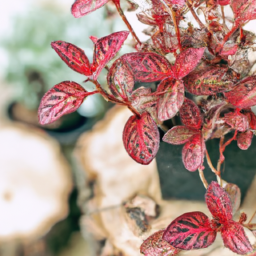
Are you tired of spending countless hours tending to your garden, only to be left with wilting plants and aching muscles? If so, it’s time to discover the beauty and convenience of low-maintenance plants. In this blog post, we will explore the world of easy plants that can effortlessly transform your garden into a lush and thriving oasis. Say goodbye to the constant upkeep and hello to a garden that practically takes care of itself. With the help of these easy plants, you’ll be able to enjoy the beauty of nature without the stress and strain of traditional gardening methods. So, let’s dive in and learn how to create a stunning garden with minimal effort.
Benefits of Low-Maintenance Plants for Your Garden
Gardening is a rewarding and therapeutic activity that allows you to connect with nature and create a beautiful outdoor space. However, not everyone has the time or expertise to dedicate to high-maintenance plants. That’s where low-maintenance plants come in. These easy plants can transform your garden without requiring constant attention and care. In this article, we will explore the benefits of incorporating low-maintenance plants into your garden.
1. Time and Effort Saving
One of the primary advantages of low-maintenance plants is the time and effort they save. Unlike high-maintenance plants that demand regular watering, pruning, and fertilizing, low-maintenance plants can thrive with minimal intervention. This means you can spend less time tending to your garden and more time enjoying it. Whether you have a busy schedule or simply prefer a low-maintenance approach, these plants are perfect for you.
By choosing low-maintenance plants, you can also reduce the need for constant weeding. These plants are often more resilient and can outcompete weeds, saving you the hassle of constantly pulling them out. With less time spent on maintenance, you can focus on other aspects of gardening, such as designing your landscape or adding decorative elements.
Furthermore, low-maintenance plants are ideal for those who are new to gardening or lack experience. They are forgiving and less likely to suffer from neglect or minor mistakes. This makes them a great starting point for beginners who want to develop their green thumb without feeling overwhelmed.
2. Water Conservation
In today’s world, water conservation is a pressing concern. High-maintenance plants often require frequent watering, leading to excessive water usage. Low-maintenance plants, on the other hand, are typically more drought-tolerant and can thrive with less water. By choosing these plants, you can contribute to water conservation efforts and reduce your environmental impact.
Many low-maintenance plants have evolved to survive in arid conditions, making them perfect for regions with limited water resources. These plants have adapted to store water in their leaves, stems, or roots, enabling them to withstand dry spells. By incorporating them into your garden, you can create a sustainable and eco-friendly landscape that requires less water.
Additionally, low-maintenance plants can help combat soil erosion. Their extensive root systems bind the soil together, preventing it from being washed away during heavy rains. This not only protects your garden but also helps maintain healthy soil for other plants and organisms.
3. Aesthetically Pleasing
Contrary to popular belief, low-maintenance plants can be just as visually appealing as high-maintenance ones. There is a wide variety of low-maintenance plants available, each with its unique colors, textures, and shapes. From vibrant flowering plants to ornamental grasses, you can create a visually stunning garden without the need for constant upkeep.
These plants often have long blooming periods, ensuring that your garden remains vibrant and colorful throughout the seasons. Additionally, their low-maintenance nature allows them to thrive in various environments, including urban gardens, balconies, or even indoor spaces. This versatility makes them an excellent choice for any garden style or size.
Furthermore, low-maintenance plants can attract beneficial wildlife, such as butterflies, bees, and birds. By providing them with a habitat, you can contribute to biodiversity conservation and enjoy the beauty of nature up close.
In conclusion, incorporating low-maintenance plants into your garden offers numerous benefits. They save you time and effort, require less water, contribute to water conservation, and can be just as aesthetically pleasing as high-maintenance plants. Whether you’re a busy individual, a beginner gardener, or someone passionate about sustainable gardening, these plants are a fantastic choice. So go ahead and transform your garden with easy plants that will bring joy and beauty to your outdoor space with minimal maintenance.

Choosing the Right Easy Plants for Your Garden
Gardening can be a rewarding and therapeutic hobby, but not everyone has the time or energy to devote to high-maintenance plants. That’s where easy plants come in. These low-maintenance beauties can transform your garden without demanding too much of your attention. In this article, we will guide you through the process of choosing the right easy plants for your garden, ensuring a vibrant and stress-free outdoor space.
1. Assess Your Garden Conditions
Before diving into the world of easy plants, it’s important to assess the conditions of your garden. Different plants thrive in different environments, so understanding your garden’s sunlight exposure, soil type, and climate will help you make informed choices. Take note of the following:
- Sunlight Exposure: Observe how much sunlight your garden receives throughout the day. Is it full sun, partial shade, or full shade?
- Soil Type: Determine whether your soil is sandy, loamy, or clayey. This will influence the drainage and nutrient-holding capacity.
- Climate: Consider the average temperature range and rainfall in your region. Some plants are better suited for hot and dry climates, while others thrive in cooler, wetter conditions.
By understanding your garden’s conditions, you can choose easy plants that are well-suited to thrive in your specific environment.
2. Research Easy Plant Varieties
Now that you have a clear understanding of your garden’s conditions, it’s time to research easy plant varieties that will flourish in your space. Here are a few popular options:
Succulents and Cacti
Succulents and cacti are excellent choices for low-maintenance gardens. They are known for their ability to store water, making them resilient during dry spells. These plants come in a wide variety of shapes, sizes, and colors, allowing you to create visually appealing arrangements.
Native Plants
Native plants are well-adapted to the local climate and soil conditions, making them easy to care for. They have evolved to thrive in their specific regions, requiring minimal intervention. By choosing native plants, you also support the local ecosystem and attract native wildlife to your garden.
Herbs and Edible Plants
Herbs and edible plants not only add beauty to your garden but also provide fresh ingredients for your kitchen. Many herbs, such as rosemary, thyme, and sage, are low-maintenance and require little attention. Additionally, growing your own vegetables and fruits can be a rewarding experience.
3. Consider Maintenance Requirements
While easy plants generally require less maintenance than their high-maintenance counterparts, it’s essential to consider their specific care needs. Some plants may still need occasional watering, pruning, or fertilizing. Evaluate your availability and willingness to perform these tasks before finalizing your plant choices.
Additionally, think about the long-term maintenance requirements. Some plants may spread aggressively or require regular division to prevent overcrowding. If you prefer a hands-off approach, opt for plants that naturally stay compact or have slow growth rates.
Remember, even easy plants need some level of care, so choose varieties that align with your gardening style and available time.
Conclusion
Transforming your garden with low-maintenance plants can be a game-changer for busy gardeners or those looking for a more relaxed gardening experience. By assessing your garden conditions, researching suitable plant varieties, and considering maintenance requirements, you can create a stunning and stress-free outdoor space that brings you joy throughout the seasons. So go ahead, choose the right easy plants, and let nature work its magic in your garden!

Tips for Transforming Your Garden with Easy Plants
Introduction
Transforming your garden with low-maintenance plants can be a rewarding and enjoyable experience. Not only do easy plants require less time and effort to maintain, but they also add beauty and charm to your outdoor space. In this guide, we will explore three essential tips to help you successfully transform your garden with easy plants. Whether you are a beginner or an experienced gardener, these tips will provide you with valuable insights to create a stunning and low-maintenance garden.
1. Assess Your Garden’s Conditions
Before diving into transforming your garden, it is crucial to assess the conditions of your outdoor space. Understanding the soil type, sunlight exposure, and climate will help you select the most suitable easy plants for your garden. Here are some key factors to consider:
Soil Type:
The first step is to determine your garden’s soil type. Is it sandy, loamy, or clayey? Different plants thrive in different soil conditions. For instance, succulents and cacti prefer well-draining sandy soil, while ferns and hostas thrive in moist, loamy soil. Take a soil sample and consult with your local nursery or extension service to identify the type of soil you have and find plants that are compatible with it.
Sunlight Exposure:
Next, evaluate the sunlight exposure in your garden. Does it receive full sun, partial shade, or full shade? This information will help you choose plants that can thrive in the available light conditions. Sun-loving plants like roses and lavender require at least six hours of direct sunlight, while shade-loving plants such as hostas and ferns prefer filtered or indirect light. Understanding the sunlight patterns in your garden will ensure you select the right plants for optimal growth.
Climate:
Consider your garden’s climate zone, as it plays a significant role in plant selection. Different plants have specific temperature and humidity requirements. Research the hardiness zone of your area to determine which plants are most likely to thrive. Native plants are often a great choice as they are adapted to the local climate and require minimal maintenance. Additionally, consider any microclimates within your garden, such as areas that are more sheltered or prone to frost, as these can influence plant survival.
2. Choose Easy Plants for Your Garden
Once you have assessed your garden’s conditions, it’s time to select easy plants that will thrive in your specific environment. Here are some characteristics to look for when choosing low-maintenance plants:
Drought Tolerance:
Opt for plants that are drought-tolerant, especially if you live in an area with limited water availability or experience dry summers. Succulents, ornamental grasses, and Mediterranean herbs like rosemary are excellent choices as they have adapted to survive in arid conditions. These plants typically have fleshy leaves or specialized root systems that store water, reducing the need for frequent watering.
Perennials:
Including perennials in your garden is a smart choice for low-maintenance landscaping. Unlike annuals, perennials come back year after year, saving you time and effort in replanting. Choose varieties that are known for their durability and resilience, such as daylilies, coneflowers, and sedums. These plants require minimal care once established and often provide beautiful blooms throughout the growing season.
Native Plants:
Consider incorporating native plants into your garden. Native species are well-adapted to the local ecosystem and require less intervention to thrive. They have evolved alongside native wildlife, providing food and habitat for beneficial insects, birds, and butterflies. Native plants also tend to be more disease-resistant and require fewer pesticides or fertilizers. Research native plants in your region and choose those that suit your garden’s conditions.
3. Designing Your Low-Maintenance Garden
Now that you have assessed your garden and selected easy plants, it’s time to design your low-maintenance garden. Here are some tips to create an aesthetically pleasing and easy-to-care-for outdoor space:
Grouping Plants:
Group plants with similar water and sunlight requirements together. This allows for efficient watering and reduces the risk of over or under-watering certain plants. Additionally, clustering plants with similar colors or textures creates visual harmony and adds interest to your garden.
Mulching:
Apply a layer of organic mulch around your plants. Mulch helps retain moisture, suppresses weed growth, and regulates soil temperature. It also adds a neat and tidy appearance to your garden while reducing the need for frequent watering and weeding.
Minimize Lawn Areas:
Consider reducing the size of your lawn or replacing it with low-maintenance alternatives. Lawns require regular mowing, watering, and fertilizing, which can be time-consuming and resource-intensive. Instead, create functional outdoor spaces using pathways, seating areas, or decorative gravel. Plant groundcovers or use native grasses for areas that require some greenery.
Conclusion
Transforming your garden with easy plants is an exciting journey that can result in a beautiful and low-maintenance outdoor space. By assessing your garden’s conditions, selecting suitable plants, and designing with efficiency in mind, you can create a garden that brings joy and relaxation without demanding excessive time and effort. Remember to enjoy the process and experiment with different plant combinations to find what works best for your unique garden. Happy gardening!
Summary Snapshot
Are you tired of spending hours tending to your garden, only to see your plants wither away? Well, fret no more! In this blog post, we will explore the wonderful world of low-maintenance plants that will transform your garden into a thriving oasis with minimal effort.
Gardening doesn’t have to be a daunting task. With the right selection of easy plants, you can enjoy a beautiful garden without the constant stress of upkeep. One such plant is the succulent. These hardy plants require very little water and can survive in almost any climate. They come in a variety of shapes and colors, adding a unique touch to your garden. Another low-maintenance option is the perennial flower. Once planted, these flowers will bloom year after year, without the need for replanting. They require minimal watering and pruning, making them a perfect choice for busy gardeners. So, why not give your garden a makeover with these easy plants and enjoy a stress-free gardening experience?
Top FAQs:
Q1: What are low-maintenance plants?
A1: Low-maintenance plants refer to a variety of plant species that require minimal care and attention to thrive in your garden. These plants are perfect for individuals who have limited time, lack gardening experience, or simply want to enjoy a beautiful garden without investing too much effort.
Q2: Why should I choose low-maintenance plants for my garden?
A2: Opting for low-maintenance plants offers several benefits. Firstly, these plants require less watering, pruning, and fertilizing, saving you time and effort. Secondly, they are hardy and can withstand various weather conditions, reducing the risk of plant loss. Lastly, low-maintenance plants often have attractive foliage or vibrant flowers, enhancing the overall aesthetic of your garden.
Q3: What are some examples of low-maintenance plants?
A3: There are numerous low-maintenance plant options to choose from. Some popular choices include succulents, such as aloe vera and jade plants, which are known for their ability to store water and thrive in arid conditions. Other examples include lavender, ornamental grasses, and perennial flowers like black-eyed Susans and coneflowers.
Q4: How do I care for low-maintenance plants?
A4: Caring for low-maintenance plants is relatively easy. Most importantly, make sure to plant them in well-draining soil to prevent waterlogging. Water them sparingly, allowing the soil to dry out between waterings. Additionally, provide adequate sunlight based on the plant’s requirements. Pruning requirements are generally minimal, but it’s still essential to remove any dead or diseased foliage. Finally, consider adding a layer of mulch around the plants to help retain moisture and suppress weeds.
Q5: Can low-maintenance plants be used in different garden styles?
A5: Absolutely! Low-maintenance plants can be incorporated into various garden styles, including contemporary, cottage, or even tropical gardens. Their versatility allows them to complement different themes and design aesthetics. Whether you prefer a minimalist look or a lush, vibrant garden, you can find low-maintenance plants that suit your style and transform your outdoor space.

James Wong is a renowned ethnobotanist, plant scientist, and local television presenter. With a passion for demystifying plant science, he is known for translating complex botanical concepts into practical advice for everyday plant enthusiasts. James’s expertise spans from traditional gardening to cutting-edge plant technologies, making his insights accessible and informative.


